Reviews
From Raucous to Revelatory: The Unflinching Eye of Frans Hals
A Rijksmuseum retrospective proves the Dutch Golden Age painter captured the scope of 17th century Amsterdam, from its nocturnal joys to its harsh realties.
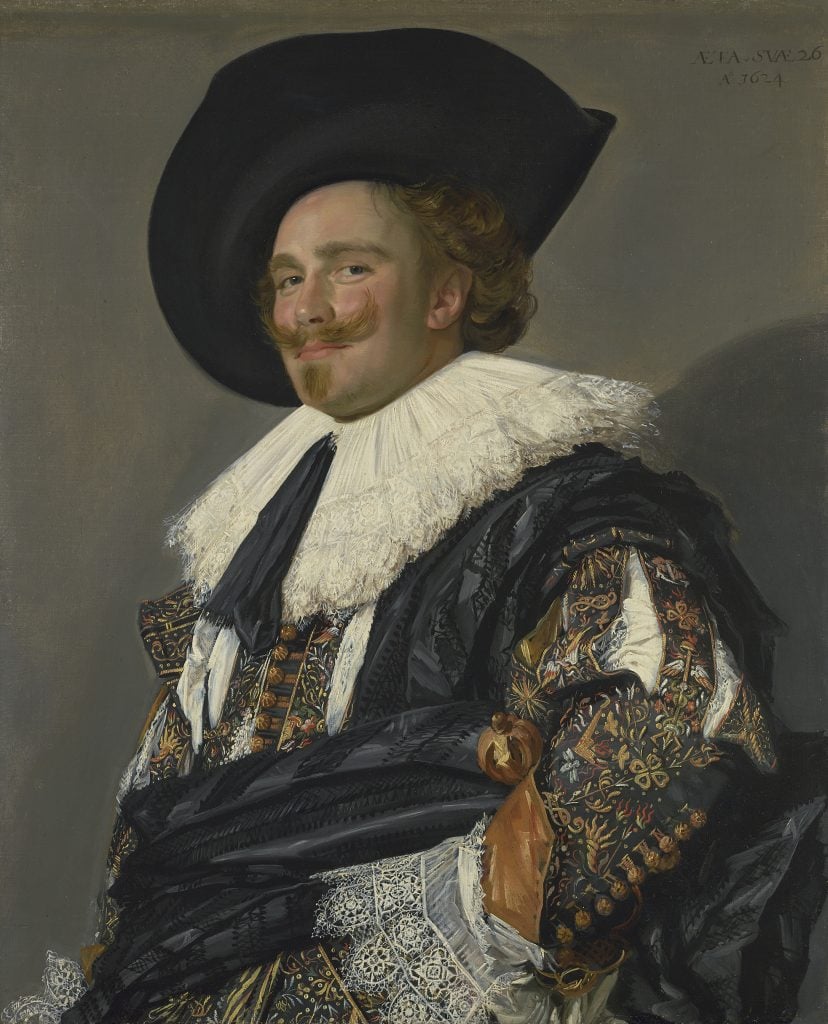
Just how aggressively did the artist booze?
That question has kept plenty of art historians busy studying the fallow years of Jackson Pollock, the darker passages of Martin Kippenberger’s career, and the tragic behavior of Vincent van Gogh—sad tales, ultimately, that make their achievements all the more remarkable.
Frans Hals’s alleged carousing presents a more complicated case. The 17th-century Dutch painter’s reputation as a lush comes in large part from a posthumous biography by the artist and writer Arnold Houbraken, who was born in 1660, six years before Hals’s death in his 80s. Relying on secondhand reports (and, perhaps, his imagination), Houbraken declared that the artist must “generally have been filled to the throat with drink every night.” There is circumstantial evidence, too. While he was a revered portraitist in Haarlem for a half-century, he left only about 200 pictures, and he had money troubles late in life.
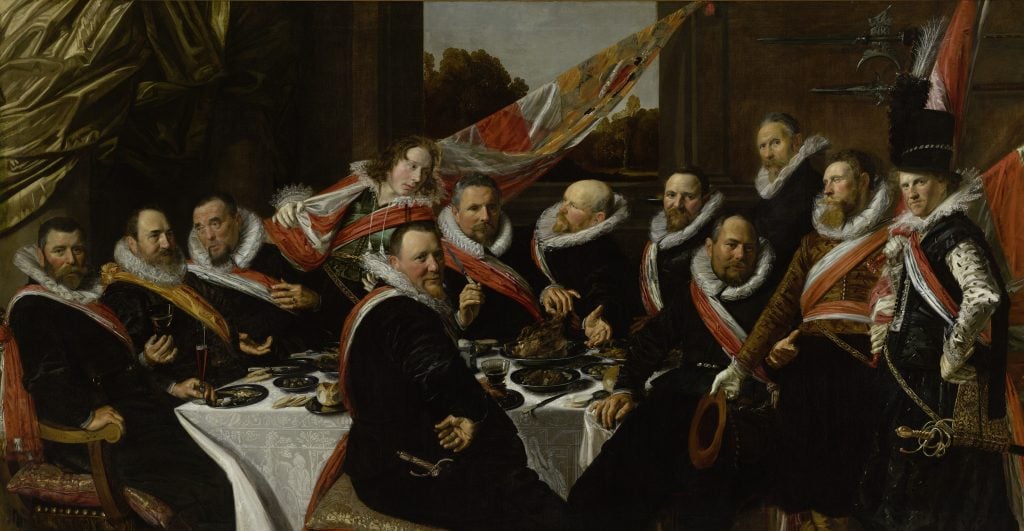
Banquet of the Officers of the St George Civic Guard, 1616.
Still, Hals’s vivid, drink-filled paintings have undoubtedly played a role in helping that reputation endure. About 50 of them (a quarter of the oeuvre!) now fill a rollicking eponymous retrospective at the Rijksmuseum in Amsterdam, many of their subjects raising glasses to toast or imbibe. Whether or not some potent elixir is present, his sitters tend to be some combination of pink-cheeked, ruddy, very jolly, and off-balance. These people are vividly, awfully present, and they are inviting you to join them. Do so with caution. I have not had this much fun in an exhibition in many years. But afterward, I did find myself rushing to the museum’s Gallery of Honor for the calm and equanimity of Vermeer and Rembrandt.
The knock against Hals, the unholy member of Dutch Golden Age trinity, has always been that his portrayals are superficial, lacking the soul of his two leading contemporaries (who have also been feted by the Rijksmuseum in recent years). That is fair, up to a point. No, he was not Rembrandt, but in even his most gilded portraits of the high and mighty (of which there are many), you will receive heavy doses of personality—or maybe even hints of satire.
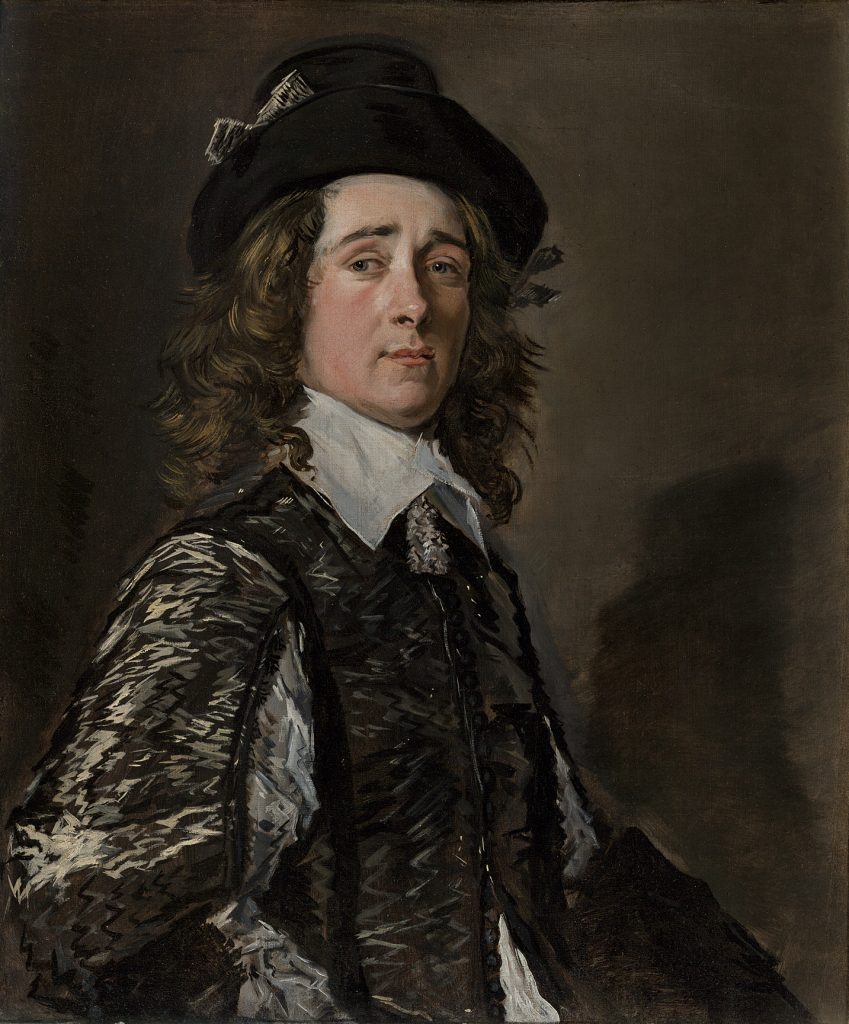
Portrait of Jaspar Schade, 1645.
There is a faintest trace of insecurity in the eyes of his famous, fabulously dressed, and fulsomely mustachioed Laughing Cavalier (1624), on loan from London’s Wallace Collection. And in a 1645 portrait, a vertiginously wealthy 22-year-old named Jaspar Schade gives a look so withering that you can just about hear him uttering some insufferable bon mot. I hate him. “Nothing was trendier than this in the 17th century!” the wall label crows of Schade’s get-up: a black floppy hat and a dark top decorated with zig-zagging silver marks.
It is difficult to write this without sounding corny, but Hals was a genius with paint. The 19th-century French critic Théophile Thoré said that his brushwork was like that of “a fencer wielding his saber,” the show’s curators—Friso Lammertse, of the Rijksmuseum, and Bart Cornelis, of the National Gallery in London—relay in the show’s richly researched (and illustrated) catalogue. (The exhibition originated at the National Gallery, and will travel to the Gemäldegalerie in Berlin in July.) The Impressionists loved him for his loose and daring touch, which grew more pronounced over the decades.
In any case, Hals’s fixation on (and his mastery of) surface-level appearances should not be held against him. He understood that self-presentation is at the heart of life in the ultra-competitive public sphere of a bustling democracy. Everyone in his pictures is angling for status—or being put in their place.
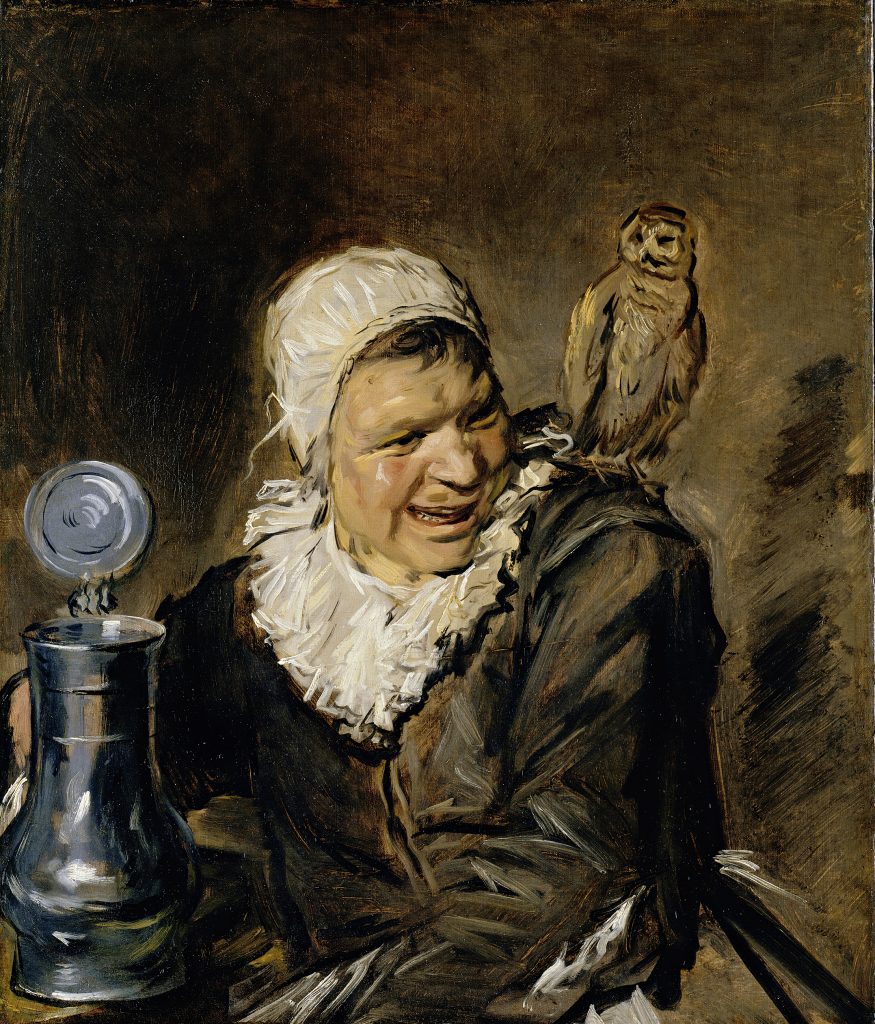
Malle Babbe, circa 1640.
Hals allowed his wealthy sitters to delight in their fineries, and when he painted children (he had 10 of his own at home at one point), he filled them with giddy mischievousness and a certain lack of sobriety. (Beer was safer than water at the time; everyone partook.) When depicting the impecunious or mentally ill, he could be unflinching, even cruel. In Malle Babbe (“Mad Babbe,” ca. 1640), we see a woman with a tortured grin, believed to be a local named Barbara Claesdr, with an owl, a symbol of folly, on one shoulder. A few years later, she would be sent to a workhouse.
Much about Hals’s life is not known, including the exact year of his birth, but we know that there were difficult stretches. Born in Antwerp in the first half of the 1580s, he fled with his family in 1586, amid the Eighty Years’ War, for the South Netherlands. Two of Hals’s children were sent to the same workhouse where Claesdr would end up—a son for a mental issue, a daughter for promiscuity. He certainly frequented taverns, but that was a prerequisite for artists courting patrons, the art historian Jaap van der Veen notes in the catalogue. “While in all probability alcohol flowed freely in the Hals household, this in no way diminishes the importance of culture within the family,” he writes.
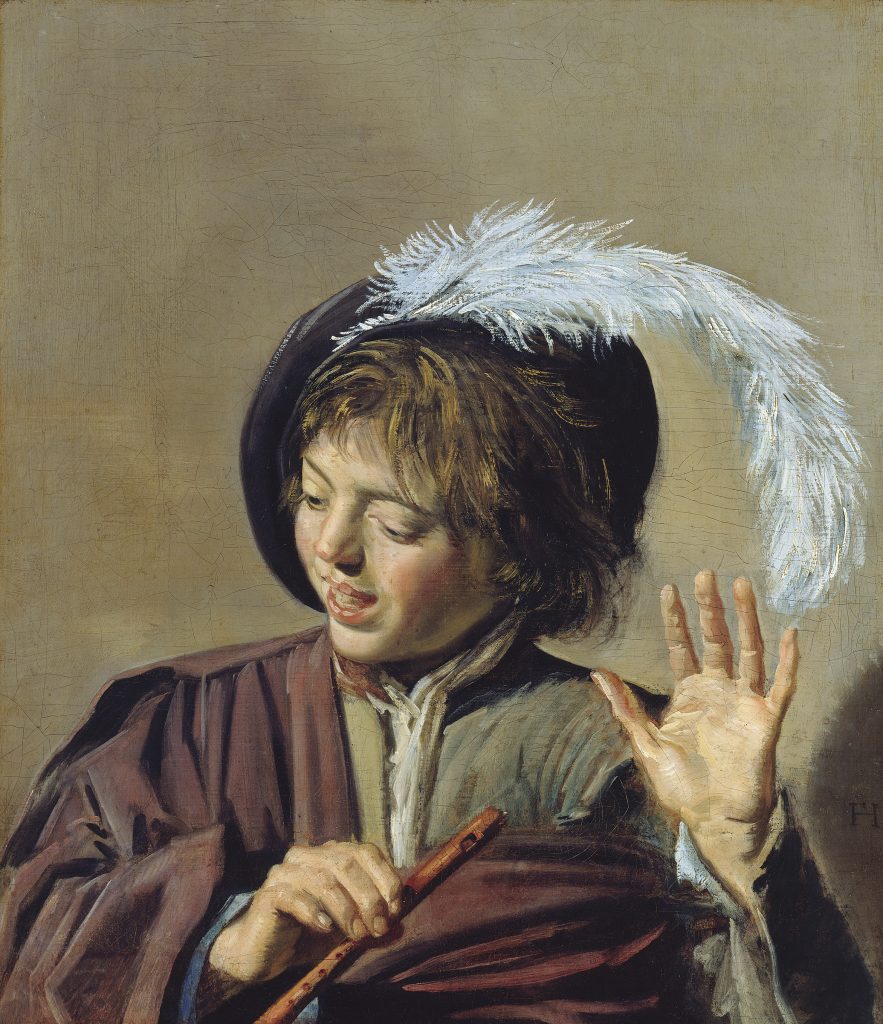
Boy with Flute, about 1627.
Both of those things, alcohol and culture, can provide recompense for tough times. Can Hals? His values may not be as profound as Vermeer’s or Rembrandt’s, but they are, in their own way, as important. He urges you to live in the moment—to enjoy your glass of wine and then ask for another, as some of the sloshed men do in his cinematic group portraits of militias. Embrace your vanity and excuse your foibles, he says, because life is precarious, and fraught, but at least for a while, we can keep the celebration going. We can stay together.
Fittingly, Hals excelled at painting musicians. In Boy with Flute (about 1627), the young instrumentalist looks away, raising one hand as if he is acknowledging applause: “That’s all for tonight, folks.” However, the audience, awed by his performance, won’t stop. The flautist demurs, and then demurs some more. But just look at the expression on his face. He will soon acquiesce. He will play another. Just one more.





